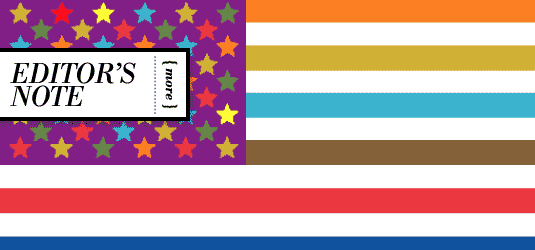Our country’s primary colors are red, white and blue. Our two major political parties’ primary colors are red (Republicans) and blue (Democrats) and, for too long, there’s been zero mixing of the two. The primary colors of our industry, year in and year out, are black and brown. However, some primary colors for Fall ’12 look to be jewel tones, such as burgundy, saffron and emerald. The primary color of presidential hopeful Mitt Romney is—well, if milquetoast is a color, then I’d vote for that. The primary color of Newt Gingrich is muddy. And before you leap to the conclusion that I’m a true blue Liberal, the man’s record is anything but clean. In fact, if dark can be considered an actual color, then I’d endorse that as the primary color of Gingrich. As for Rick Santorum, at first blush I see another millionaire sporting blue collar values beneath what is undoubtedly a white one.
On the other side of the political spectrum, some might say the primary color of President Barack Obama is deep blue. Then again, many of his detractors would paint him red for what they call Socialist policies or downright Communist leanings. Blinded-by-blue Democrats most likely view Obama’s job performance to date as rosy. But they are, of course, probably wearing glasses of the same hue.
Interestingly, the new black appears to be a call from pundits and prognosticators for our nation to come together and try to resolve our ideological differences. The goal, basically, is to move our economy out of the red and into the black. Perhaps no one made that pitch better than Clint Eastwood as part of an epic Super Bowl halftime commercial on behalf of Chrysler. Dirty Harry delivered on what many politicians have failed to do for years: rallying Americans around the good old red, white and blue.
The idea of teamwork to get America back on its feet sure was inspiring when packaged in this moving commercial. It also seems like common sense. At the very least, cooperation has to be more productive than screaming at each other until one’s either blue in the face or red-faced in anger, depending on your state or side of the aisle. Let’s hope this spirit of working together won’t turn out to be just a Madison Avenue smokescreen that politicians and employers hide behind without really doing what it takes to get more Americans back to work.
In the meantime, hope springs eternal that the stubborn gloom that has blackened our economy brightens this year. More green shoots of recovery are grabbing hold of late, and reports of pink slips are becoming less frequent. It’s moving in the right direction because every extra disposable dollar ups the ante for increased sales in our industry. And we’ll take all the help we can get after a largely brown winter nationwide has made grabbing those dollars difficult. Unfortunately, Mother Nature doesn’t always paint a pretty picture, and there’s little that can be done about that.
What is in our control is the mosaic of styles that we can offer to consumers each season. Our industry is capable of creating a palette of products that can entice consumers to spend. One need only look at the success of Alegria since its inception four years ago for proof. Luke Chen, COO and the subject of this month’s Q&A (p. 18), says the comfort brand’s “color therapy” premise (32 colors and patterns are offered in its signature clog alone) has been a key factor behind its 25 percent annual sales gains. Alegria has become a nice little gold mine for its retail partners. Similarly, the 24 Plus Award winners for design and retail excellence profiled in this issue (p. 28) are a reflection of our industry’s true colors: innovation and imagination. And while such qualities may make others green with envy or, worse, lead to them getting caught red-handed for knockoffs, it’s with great pleasure that Footwear Plus—for 13 years running—acknowledges such colorful success stories. You might even say it’s one of our primary goals.




